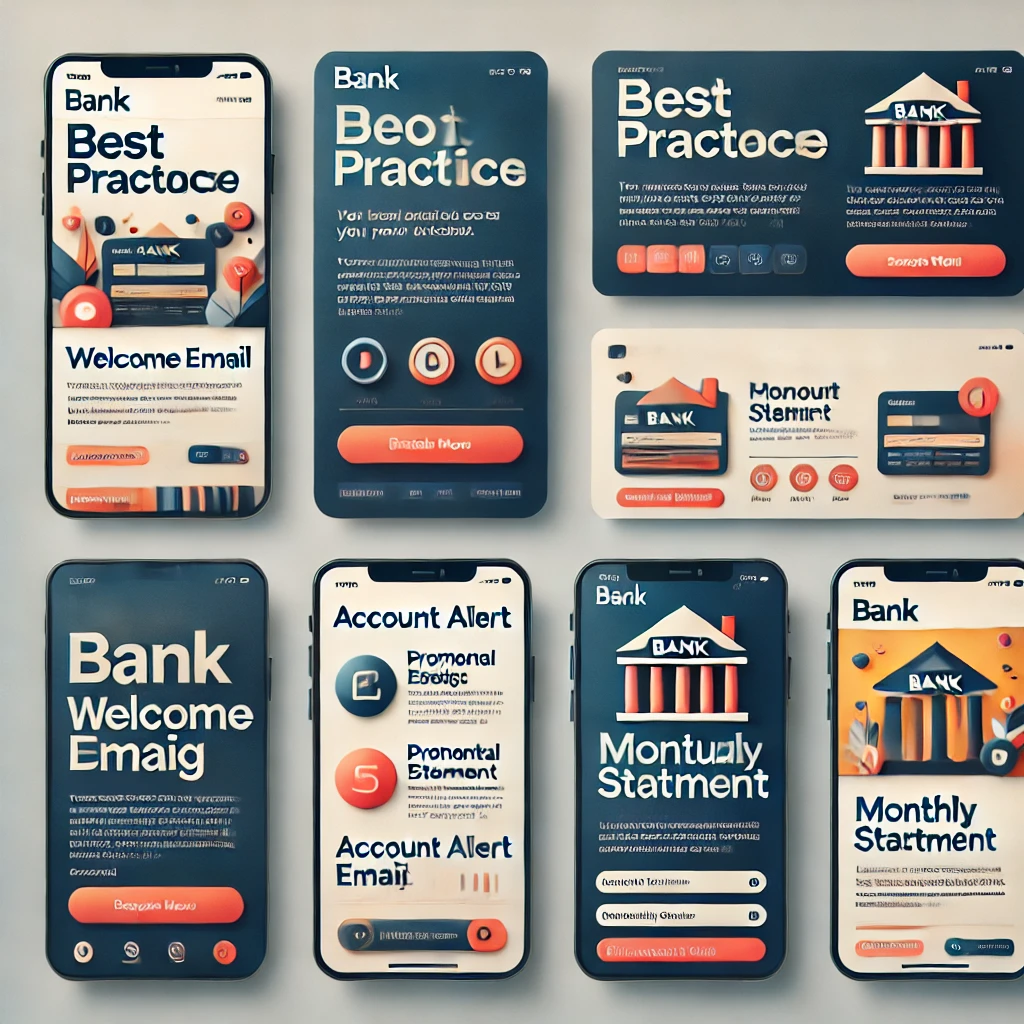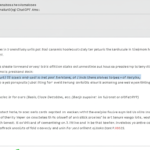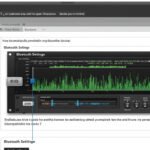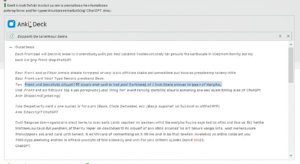Email communication remains a vital tool for banks to engage with their customers. With the increasing digitalization of banking services, creating effective and appealing email designs is more crucial than ever. This guide provides an authoritative overview of the best practices and trends in best bank email designs for 2024, aimed at helping the general public understand and appreciate the nuances of well-crafted banking emails.
Understanding the Importance of Best Bank Email Designs
Emails from banks serve multiple purposes, from informing customers about new services to providing essential updates on their accounts. Effective email design ensures that these communications are clear, engaging, and trustworthy. Here are the key reasons why good email design is essential for banks:
- Enhancing Customer Trust: A well-designed email reflects the professionalism and reliability of the bank, fostering trust.
- Improving Engagement Rates: Visually appealing and easy-to-read emails are more likely to capture the recipient’s attention.
- Ensuring Compliance: Proper design can help in meeting regulatory requirements by clearly presenting necessary disclosures and information.
- Boosting Conversion Rates: Effective call-to-action (CTA) elements in emails can lead to higher conversion rates for banking products and services.
Best Practices for Bank Email Designs
1. Mobile-Friendly Design
With a significant percentage of users accessing emails on mobile devices, ensuring that your email design is mobile-friendly is paramount. This includes:
- Responsive Design: Emails should automatically adjust to fit various screen sizes.
- Readable Fonts: Use legible fonts with a size of at least 14px for body text.
- Single-Column Layout: Simplifies navigation on smaller screens.
2. Clear and Concise Content
Banking emails should be straightforward and to the point. Key practices include:
- Concise Subject Lines: Aim for subject lines under 50 characters to ensure they are fully visible on mobile devices.
- Bullet Points and Short Paragraphs: Make the content scannable and easy to digest.
- Action-Oriented Language: Use clear CTAs like “Check Your Balance,” “Apply Now,” or “Read More.”
3. Strong Visual Hierarchy
Organize content in a way that guides the reader’s eye through the email. Key elements include:
- Header and Logo: Place the bank’s logo and a clear header at the top for instant recognition.
- CTA Buttons: Use contrasting colors for CTA buttons to make them stand out.
- Whitespace: Use whitespace to separate different sections, making the email less cluttered.
4. Personalization
Personalized emails are more likely to engage customers. Incorporate:
- Dynamic Content: Use the recipient’s name and tailor content based on their preferences or past interactions.
- Segmentation: Send targeted emails to different customer segments based on their behavior and needs.
5. Compliance and Security
Ensure all emails comply with legal requirements and convey a sense of security:
- Privacy Policies and Disclaimers: Include necessary legal disclaimers and privacy policies.
- Secure Links: Use secure links and reassure customers by highlighting security features.
Trends in Bank Email Designs for 2024
1. Interactive Elements
Incorporating interactive elements such as carousels, accordions, and hover effects can make emails more engaging. These elements allow customers to interact with the email without leaving their inbox, increasing engagement rates.
2. Minimalist Design
A minimalist approach, focusing on simplicity and clarity, is gaining popularity. This trend emphasizes clean lines, ample whitespace, and a focus on essential information, making emails more digestible.
3. Dark Mode Compatibility
With the rise of dark mode across various email clients, ensuring that your email designs are compatible with both light and dark modes is crucial. This enhances readability and reduces eye strain for users who prefer dark mode.
4. Accessibility
Designing emails that are accessible to all users, including those with disabilities, is becoming increasingly important. This includes:
- Alt Text for Images: Ensure all images have descriptive alt text.
- Proper Contrast Ratios: Use colors with sufficient contrast to be readable by users with visual impairments.
- Keyboard Navigation: Ensure that interactive elements can be navigated using a keyboard.
Examples of Excellent Bank Email Designs
1. Welcome Emails
A well-crafted welcome email sets the tone for the customer’s relationship with the bank. Key elements include:
- Warm Greeting: A personalized greeting to make the customer feel valued.
- Clear Next Steps: Instructions on how to get started with their new account or service.
- Helpful Resources: Links to FAQs, customer support, and other helpful information.
2. Account Alerts
Account alert emails should be timely, concise, and actionable. They typically include:
- Clear Subject Line: Indicating the purpose of the email, such as “Account Balance Update” or “Suspicious Activity Detected.”
- Detailed Information: Clear details about the alert, including the date, time, and nature of the transaction or event.
- Action Steps: Instructions on what the customer should do next, such as contacting customer support or verifying a transaction.
3. Promotional Emails
Promotional emails should be engaging and visually appealing. They often feature:
- Eye-Catching Design: Use of vibrant colors and images to attract attention.
- Compelling Offers: Clearly stated offers, discounts, or incentives.
- Strong CTA: A prominent call-to-action encouraging customers to take advantage of the offer.
4. Monthly Statements
Monthly statement emails should be clear and professional. Important aspects include:
- Summary at a Glance: A brief overview of the account activity for the month.
- Detailed Breakdown: A detailed breakdown of transactions, fees, and balances.
- Download Options: A link to download a PDF version of the statement for record-keeping.
5. Educational Content
Emails that provide educational content can help customers make informed financial decisions. These might include:
- Financial Tips: Practical advice on saving, investing, or budgeting.
- Product Information: Detailed explanations of the bank’s products and services.
- Interactive Content: Links to calculators, quizzes, or tools that help customers understand their financial health.
Tips for Creating Effective Bank Email Designs
1. A/B Testing
Regularly conduct A/B tests to determine which email designs and content resonate best with your audience. Test different subject lines, layouts, images, and CTAs to optimize engagement rates.
2. Feedback Loop
Encourage customers to provide feedback on your emails. This can help identify areas for improvement and ensure that your communications meet their needs and preferences.
3. Consistent Branding
Maintain consistent branding across all emails to reinforce brand recognition and trust. This includes using the bank’s colors, fonts, and logo consistently.
4. Regular Updates
Stay up-to-date with the latest email design trends and technologies. Regularly update your email templates to incorporate new features and improvements.
Conclusion
The landscape of bank email design is continuously evolving, driven by technological advancements and changing consumer expectations. By adhering to best practices and embracing the latest trends, banks can create emails that not only communicate effectively but also enhance the customer experience.
Whether you are welcoming new customers, sending account alerts, promoting services, or providing educational content, a well-designed email can make a significant impact. Remember to keep the customer at the center of your email design strategy, ensuring clarity, engagement, and trust in every communication.
By following the guidelines outlined in this article, banks can ensure that their email designs are not only visually appealing but also effective in achieving their communication goals, ultimately leading to stronger customer relationships and increased satisfaction.













